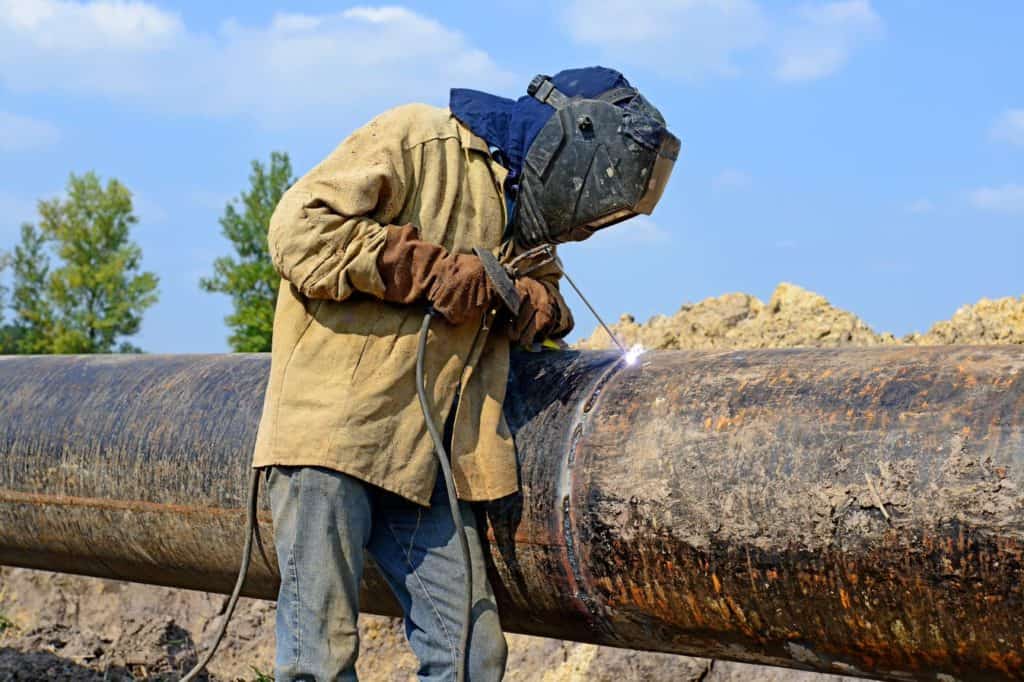Ultrasonic Testing of Welds: Choosing the Most Cost-Effective Equipment

Weld testing is a routine duty for companies in the oil and gas, power generation, manufacturing, and transportation industries—and a critical one. Welds are simultaneously commonplace and integral, relied on to hold together pipelines, bridges, and other infrastructure, large assets like chemical holding tanks and nuclear pressure vessels, and important, expensive equipment like tower cranes. Companies in these industries have many welds to watch over, and the failure of any one of them can be catastrophic.
As such, companies responsible for weld testing must balance between two commanding prerogatives in their testing regimes—effectiveness and efficiency. Because of the consequences of weld failure, companies must invest in thoroughly effective weld testing equipment and software. Yet because of the scale of weld testing required, companies must also seek the most efficient testing equipment possible, striving both to contain costs and to maximize coverage. Choosing the right equipment for the ultrasonic testing of welds comes down to finding solutions which achieve the right balance of capability and cost.
Establishing Inspection Requirements for the Ultrasonic Testing of Welds
Nondestructive ultrasonic testing equipment to perform volumetric scans of weld interiors has become a standard method of weld testing. It is rapidly replacing earlier radiographic testing methods due to the imaging limitations of radiography as well as increasing regulatory scrutiny, worker safety and efficiencies. Ultrasonic equipment allows technicians to visualize any defects or flaws within welds and compare them against historical data standards to determine whether a weld is strong enough to remain in service, or whether it must be replaced.
Inspection needs vary based on weld size, type, complexity, and environment. Equipment needs naturally vary based on inspection needs. Small, simple welds can be scanned accurately and effectively by simple ultrasonic testing equipment. Long seam, dissimilar metal welds in difficult environmental conditions and other complex testing applications require more robust, powerful testing equipment. Field operators prize portability in their testing equipment, and inspectors working on hot production floors or freezing pipeline lays value durable equipment which can work in wide temperature ranges.
Each industry, and each company within each industry, will have its own particular inspection needs. In order to determine which equipment capabilities are needed, it’s first necessary to compile a comprehensive list of testing requirements. This list should not only include the number and type of each weld to be tested, but also testing frequency, and should be cross-referenced against any applicable government regulations as well as standards provided by organizations such as ANSI and ASTM. Companies may be subject to regulations originating from multiple overlapping legal authorities, and should consult with legal counsel to determine the level of testing required to meet the most restrictive requirements which apply.
Once a company’s comprehensive inspection needs have been established, the next step is to procure the most cost-effective testing solutions available that can meet the company’s needs.
Equipment Solutions for Ultrasonic Weld Testing
Speed, power, portability, and durability all affect the cost of ultrasonic testing equipment. In order to maintain cost control, companies must match equipment capabilities to inspection needs as closely as possible. Determining equipment needs is an ongoing, complex process involving trade-offs between multiple competing factors. For instance, faster testing equipment may require a higher capital outlay, but can generate a return on investment by accomplishing more testing with fewer man-hours.
The complexity of inspection needs resists blanket equipment solutions. A single project or work site, such as an offshore drilling platform, can have multiple levels of inspection needs. Mid-level testing equipment may be enough to successfully scan riser welds, but not enough to appropriately image welds between dissimilar metals. Conversely, the high-performance equipment needed for DM welds will be underutilized when tasked with simpler scanning applications. As a result, procurement managers should strive for nuance in equipment sourcing, placing orders for multiple tiers of ultrasonic scanning equipment to reflect mixed testing needs, without overspending.
Sourcing the right equipment is best accomplished by consulting with a trusted, reputable manufacturer. Equipment needs must be re-evaluated as projects and regulations change, new equipment capabilities become available, and old equipment becomes obsolete. It’s a conversation, carried on over years and decades, between procurement managers and expert personnel employed by manufacturers. The most cost-effective equipment for the ultrasonic testing of welds isn’t necessarily the least expensive—it’s the equipment that provides the greatest value over its lifespan.
Zetec has been a trusted provider of ultrasonic testing equipment for weld inspections for over half a century. To find the most cost-effective solution for your inspection needs, contact us today.
